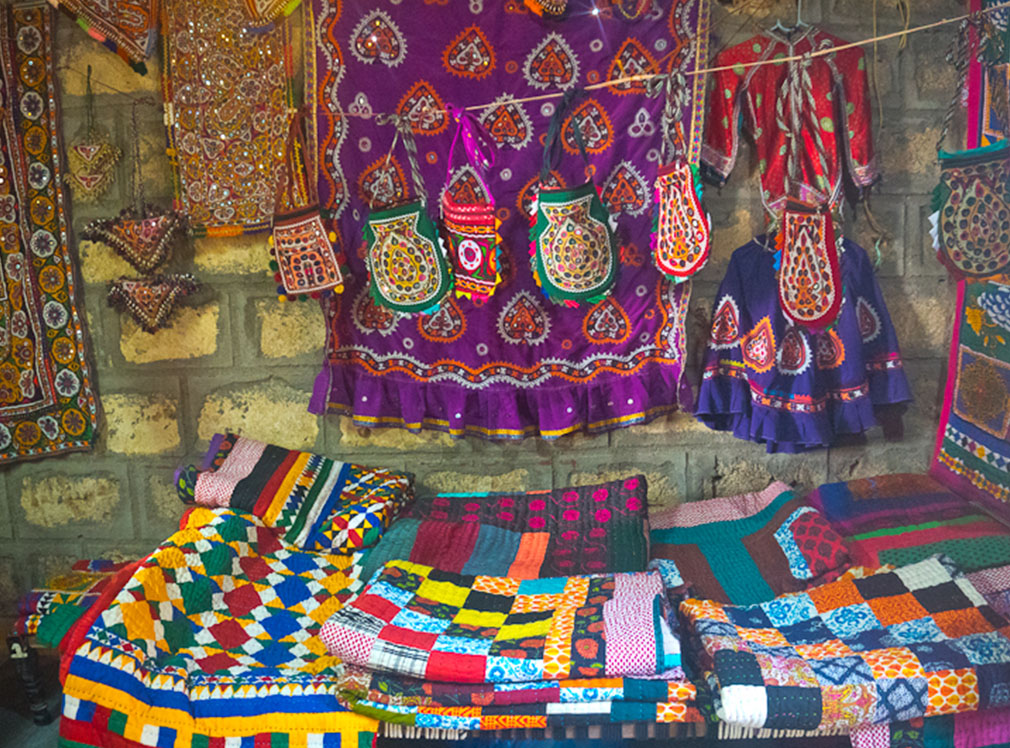Successfully sent!
Thank you for your interest in Maruti Suzuki Arena .

It was just like another Indian village - rustic, unpretentious, with narrow lanes leading to a cluster of houses with mud walls, and freshly painted, vibrant doors.
But behind these colourful frames were stories of hands crafting magic. Some with nimble fingers and some aged with wrinkles, but all excelling in the art passed on by their forefathers to them over centuries.
We had arrived at Nirona, as part of the 4-day self-drive trail on ’Wheels of Wander’ by Maruti Suzuki Alto and Outlook Traveller. Nirona is a prominent craft hub in the Kutch region of Gujarat, with three traditional art forms as the cornerstone of the village. Another veritable stop lies in Bhujodi, a craft centre where one buy handicrafts from the entire Kutch region.
Copper bell art, Nirona
If chimes could speak, they would speak about Mr. Husen Sidik's craft. As one enters the copper bell house, he can be found working diligently, unfazed by the number of tourists that come to see his work. A septuagenarian who has been practicing the art since his teens, he is happy to demonstrate how he chips and hammers the iron slab into dainty bells that emit musical sounds. The contrast of the sound of the hammer chiseling a chime that emanates mellifluous sounds is palpable.
The Luhar community in the villages of Nirona and nearby Jura has been practicing the copper bell art for centuries. Men folk of the household indulge in the initial process of moulding the three parts of the bell. This entire process is done by hand with no machines to aid the form of the bell, without any joints. When the main structure of the bell is made, it is devoid of any sounds. Then the women take over and give the bell a copper shade by rolling it in a mud paste and keeping it in a brick kiln. The bells are then hammered again in different ways to emit different sounds.
Rogan Art - The Persian treasure, Nirona
Have you ever tried to draw a perfectly symmetrical sketch without a stencil or a reference? If not, then watching Jabbar Bhai effortlessly trace a flower pattern on a piece of cloth using a long needle and a sticky substance will be thrilling. The Gaffur Khatri household has been preserving and practicing this oil-based embellished art form since 300 years, which is believed to have originated in Persia. As he meticulously works on the piece, he explains how ‘Rogan’ is prepared by heating castor oil till it catches fire and then mixed with cold water to make it a sticky, elastic substance. This is then mixed with natural colours. The skill comes into play when this is applied in patterns with precision. Within minutes, a detailed flower design emerges. Once ready, he folds the cloth swiftly to get a mirror image on the other side.
The family has won several National awards and the biggest achievement for them has been the recognition given by Prime Minister Modi, who gifted a Rogan masterpiece to President Obama.
Lacquer Art, Nirona
To add to the burst of colours, the Wada tribes of the village make wooden spatulas, ladles and rolling pins. Each one is embellished with zigzag designs in bright coloured lacquer. Lacquer is a kind of wax obtained from trees and extracted with a stone. This is then mixed with colours and applied to wooden objects to make them attractive. To retain their sheen, groundnut oil is applied to all the objects.
Hiralaxmi Craft Park, Bhujodi
For those who want a craft flavour of the entire region, Hiralaxmi Craft Park is an ideal option. There are well-defined shops in a traditional, rustic setting, where locals from nearby villages sell their wares on fixed rates, on a monthly rotational basis. There aren’t any demonstrations here, but ample variety to choose from: leather ware of Hodko, Ajrakh prints of Khavda, Bandhni work of Mandvi, Kharad weaving of Kukma and many more.
Craft trails are one of the key highlights of Kutch. While Nirona and Bhujodi are important pit stops, there are many other small villages that are home to unmatchable creativity in handicraft.
Courtesy of Outlook Traveller
Simply add your email address into the box below and click Subscribe. You will be sent an OTP mail to the below entered Email ID.
Thanks for subscribing to The Maruti Suzuki Arena World. We hope that your experience with us is a delightful one.